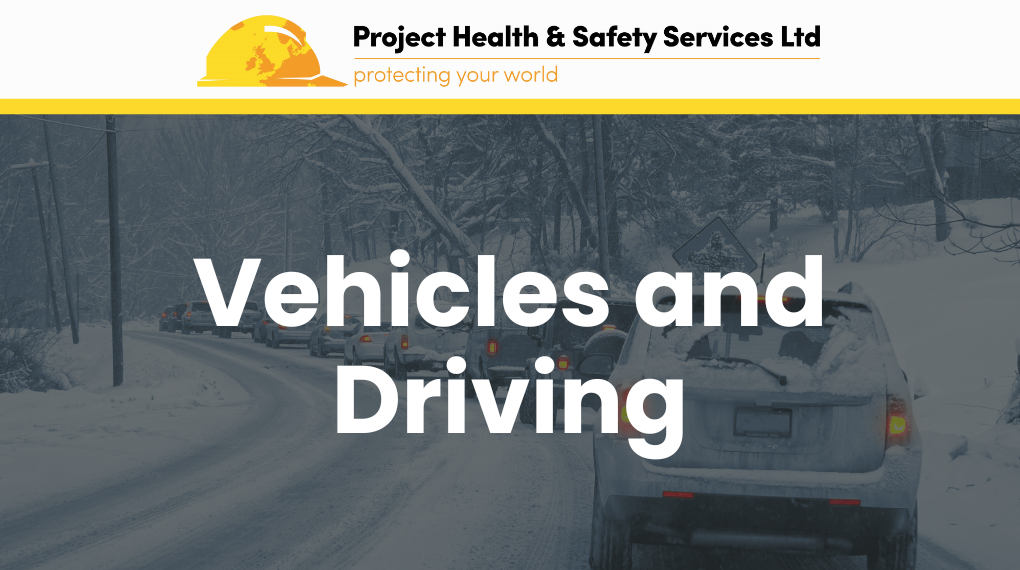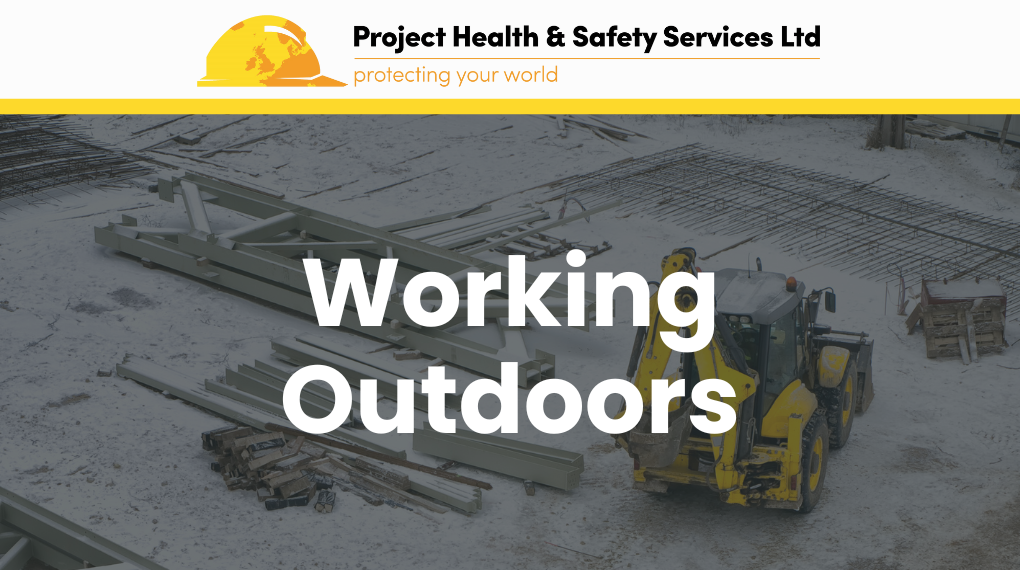As the temperature drops and we all collectively agree that the only thing colder than the weather is our enthusiasm for it, winter is fast approaching. The chilly season comes with its own set of challenges, especially for those who need to work and commute. Each year, snow, ice, wind, rain, and fog impact the safety of our workplaces. There is an increased risk of slips, trips, and falls in and around the workplace, and an increased risk of road traffic accidents. However, with care and forward planning these accidents can be avoided. In this guide, we will explore some tips and precautions you can take to ensure your safety while working and driving during winter.

Prepare and Check Your Vehicle
Before the snow starts to fall, it’s crucial to prepare your vehicle for the winter conditions. Make sure tire pressures are correct, check your oil, antifreeze and screen wash are topped up, and that your lights and indicators work. Before you travel, you should also make sure your windows are clean and free from snow, ice and debris.
You might also want to prepare a winter emergency kit to keep in your vehicle. Pack items such as a blanket, torch, extra clothing, non-perishable snacks, a first aid kit, a hi-vis jacket and a portable mobile phone charger. These essentials can be a lifesaver if you find yourself stranded on a cold, dark roadside.
Plan Your Journey and Follow Advice
To avoid rushing and reduce stress, plan your journeys in advance and factor in extra travel time. Winter weather can slow down traffic significantly. Don’t rush! Keep a safe distance from the vehicle in front and drive to the conditions of the road at a safe and controlled pace.
You should also stay ahead of the weather by regularly checking forecasts before heading out. Be aware of any impending snowstorms, high winds, or other severe weather conditions and do not attempt to travel in these conditions. If possible, plan your travel around more favourable weather conditions and always follow the advice given.
Take Care and Precaution on Icy Surfaces
It is crucial to keep roads, paths, and walkways free from snow and ice by applying salt or absorbent grit to surfaces where possible. Driving in icy conditions can heighten the dangers on the road. If you find yourself in a skid, stay calm and avoid panic. Steer in the direction you want to go and avoid slamming on the brakes!
You must also take additional care when walking on wet or frozen surfaces and use hand holds where provided, maintaining three points of contact whenever possible. When loading and unloading, you should also take extra time and care, and seek assistance when needed. Wear appropriate footwear, too.

Wear Suitable Clothing
Always wear suitable clothing for the weather conditions. Dress warmly in layers, as temperatures can vary throughout the day. Ensure you have waterproof and insulated footwear to keep your feet warm and dry. You should also ensure that wet clothing is replaced regularly and suitably dried before re-use. Don’t forget a hat and gloves to protect against the cold and, in bad light, make yourself seen by wearing a hi-vis vest or jacket.
Keep Your Worksite Clean and Tidy
Maintaining high standards of housekeeping by keeping your own worksite clean and tidy is crucial at any time in the year for safety, but this is more of a challenge in winter. Snow, ice and wet patches can create slippery surfaces, increasing the risk of accidents. Regularly clear walkways, work areas, and access points to prevent slips, trips, and falls – apply grit wherever it is needed. You should also clean up spills of water, fuels and chemicals immediately to prevent a further slipping hazard. Proper storage of tools and equipment also ensures they are not hidden by snow and that they remain in good condition and ready to use when you need them.
Communicate Effectively
If your job involves outdoor working or driving in winter, ensure effective communication with colleagues and supervisors. Establish protocols for checking in during extreme weather conditions, and make sure everyone is aware of the safety measures in place. If you see any issues, report to the appropriate person.

Avoid Darkness
Darkness coupled with winter weather can make navigation challenging. Stick to well-lit paths and avoid poorly lit or unfamiliar areas. You may also wish to carry a torch and use if required, and we’d recommend wearing hi-vis clothing too. Adequate lighting not only helps you to see potential hazards, but also makes you more visible to others, reducing the risk of accidents.
Let Someone Know your Whereabouts
Before embarking on a journey or starting work in challenging conditions, inform family, friends, or colleagues of your whereabouts and expected arrival and return times. In case of unexpected delays or emergencies, having someone aware of your location can speed up the time taken to get assistance and provide peace of mind to both you and your peers or loved ones.
So…
Navigating work and travel during winter requires careful planning and attention to safety. By being prepared, staying informed, and taking care and precautions, you can ensure a safer and more comfortable winter experience. Remember, it’s better to be over prepared than caught off guard when faced with the challenges of the cold season. So, consider the above hints and tips and stay safe this winter!
If you would like more information or support from our team here at PHSS, please give us a call on 0141 471 6266 or contact us at info@projecthss.co.uk













